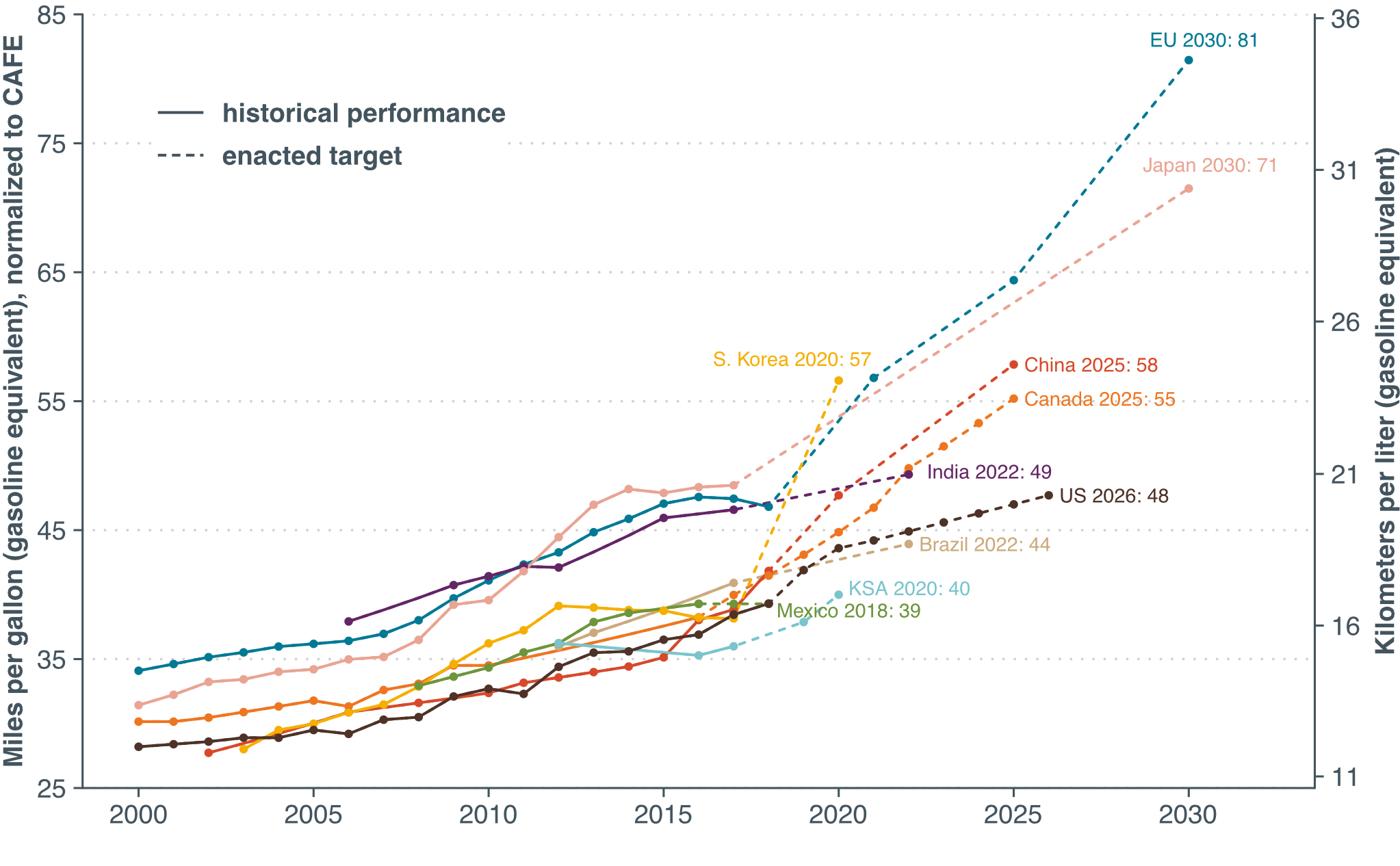The United States will fall well behind leading countries on passenger vehicle fuel economy, thanks to the Trump administration’s recent rollback of federal standards. The rollback, issued as a final rule in April, not only jeopardizes the competitiveness of the American auto industry in the global marketplace, but also threatens progress on reducing energy use and greenhouse gas emissions.
The rule calls for only a 1.5% increase per year in fuel efficiency for model year 2021-2026 vehicles, a major reduction compared to the almost 5% annual increase that was part of the Obama administration’s program. So instead of new U.S. cars hitting 55 miles per gallon (mpg) by 2026, their target will be 48 mpg — up from 44.8 mpg this year. These figures are based on laboratory testing; real-world mileage tends to be about 20% lower.
Source: International Council on Clean Transportation (ICCT) 2020
Other countries have already surpassed the current U.S. target. China and South Korea have model year 2020 targets of 47.7 mpg and 56.6 mpg, respectively, while the European Union’s standard is 56.8 mpg for 2021 cars.
Looking ahead, some of the gaps will widen. The E.U. and Japan have very ambitious targets in place for model year 2030 cars at 81 mpg and 71 mpg, respectively. India’s target for 2022 cars is 49 mpg, especially impressive considering that it finalized its first fuel economy standards for passenger vehicles in 2014.
Also worth noting – while Canada has traditionally followed the U.S. fuel economy program, it has made no commitment to accept the weakened standards. It will likely continue to aim for the previous 2025 target of 55 mpg, leaving the United States in the rear-view mirror.
As a result, American manufacturers may struggle. Both the E.U. and Japan are significant competitors to the United States for vehicle manufacturing and sales. Detroit will need to push out different versions of the same vehicle for different markets, an expensive endeavor. European, Japanese, and South Korean vehicles destined for the U.S. market, in contrast, will already meet their respective country’s efficiency targets and may prove to be more attractive to many drivers in the United States.




